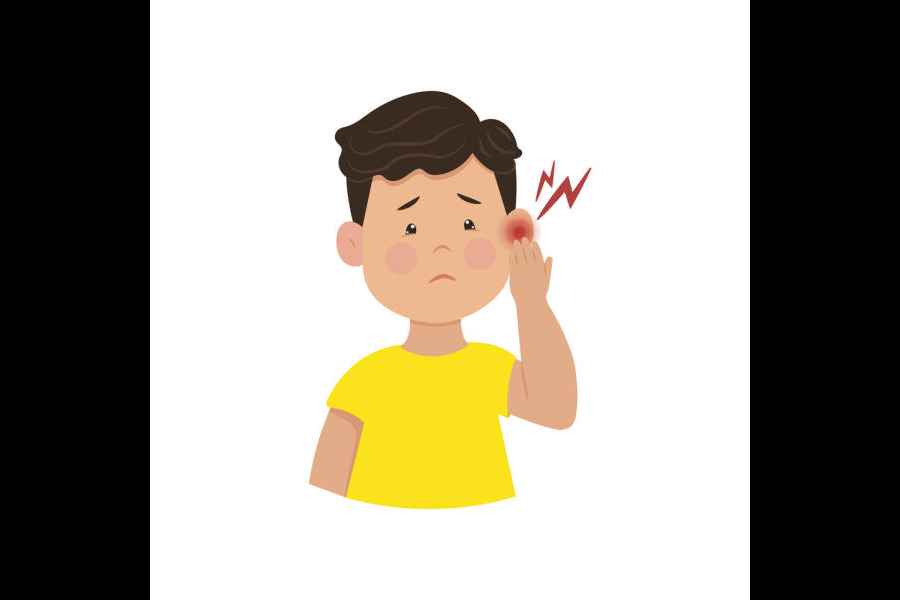Sudden ear pain affects approximately 30 per cent of children under three years of age. Children cannot vocalise this discomfort so they often cry, become irritable and may tug at their ear. They may refuse food. Fever is not always present.
This pain is caused by issues with the eustachian tube, a short and straight connection from the ear to the throat. Viruses, bacteria or food debris can enter this tube and block it, resulting in unequal pressure on both sides of the eardrum, leading to pain. In children, this tube is shorter and straighter than in adults, making them more prone to blockages.
Acute infections in the middle ear, known as otitis media, are more likely in bottle-fed children or those who use pacifiers. Breastfed and bottle-fed infants should be propped up at a 45-degree angle during feeding to prevent this. Unfortunately, some parents feed their children milk while they are lying down, which can exacerbate the problem. They also may force-feed reluctant children solids in this position. This can lead to food entering the eustachian tube.
Children attending nursery school or daycare are also more prone to ear infections. The number of ear infections increases sharply in the first year of school.
Some children may have enlarged tonsils or adenoids blocking nasal passages. A cleft palate can also increase the number of infections. Tonsils and adenoids are needed to prevent viral and bacterial infections reaching the lungs directly. Adenoidectomy should be considered if there are four or more attacks of ear infection in the course of a year. Chronic ear infections and recurrent pain may require tympanostomy, or tube insertion in the eardrum, to prevent chronic fluid accumulation. Surgery can also be done to close a perforated eardrum with a patch.
Inhalation of cigarette smoke (passive smoking) or exposure to vaporised mosquito repellents can also contribute to ear pain in children.
Timely immunisations, with the pneumococcal and H. influenzae vaccines as well as yearly flu vaccines can reduce the risk of ear infections by 60 to 70 per cent.
Ear infections can result in pain, temporary hearing loss and balance issues. Severe recurrent cases can lead to perforation of the eardrum, oozing of pus from the ear, and even permanent damage and hearing loss. Infections may also spread to the bones behind the ear or the brain.
Parents should avoid using earbuds to clean their children’s ears as the delicate ear canal can be easily traumatised. Wax blockages can be addressed by applying wax-dissolving drops as advised over several days.
During bathing or swimming, water and shampoo can enter the ear. To prevent this, protective umbrella-like caps made of plastic are available. Avoid using a cloth to clean the ear; instead, use a hairdryer held at a distance.
In older individuals, earaches may be related to dental issues, such as wisdom teeth eruptions, caries teeth or temporomandibular joint arthritis. These can be differentiated as pulling on the ear will not cause pain in such cases. Don’t use ear drops indiscriminately for earache. They will not work unless the cause is in the ear.
Consult a physician if fever (above 100.4°F), vomiting, dizziness, loss of balance or seizures occur. Antibiotics may be necessary. Complete the prescribed course and do not stop medication when symptoms improve.
The writer has a family practice at Vellore and is the author of Staying Healthy in Modern India. If you have any questions on health issues please write to yourhealthgm@yahoo.co.in











